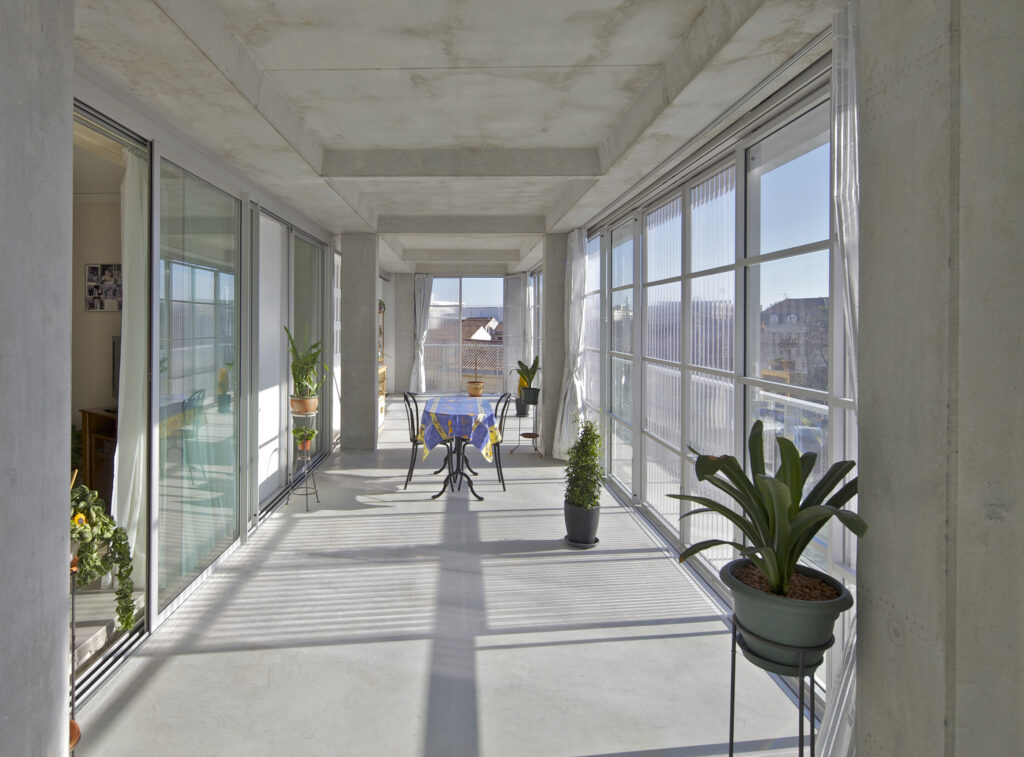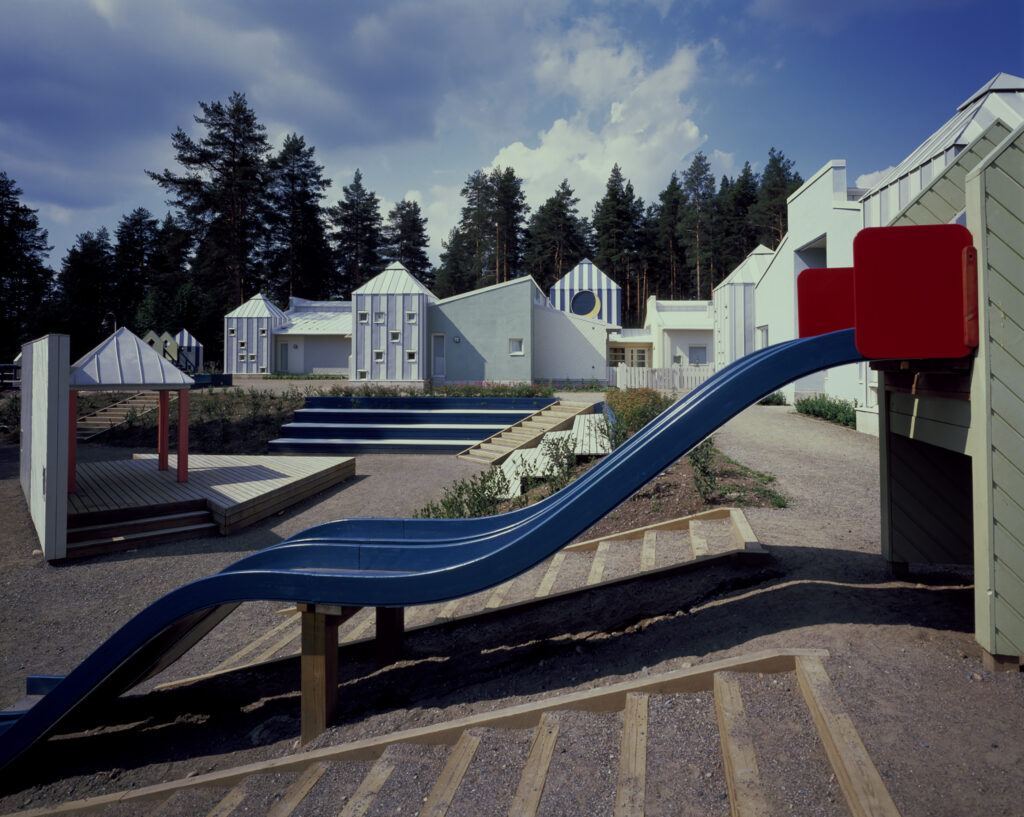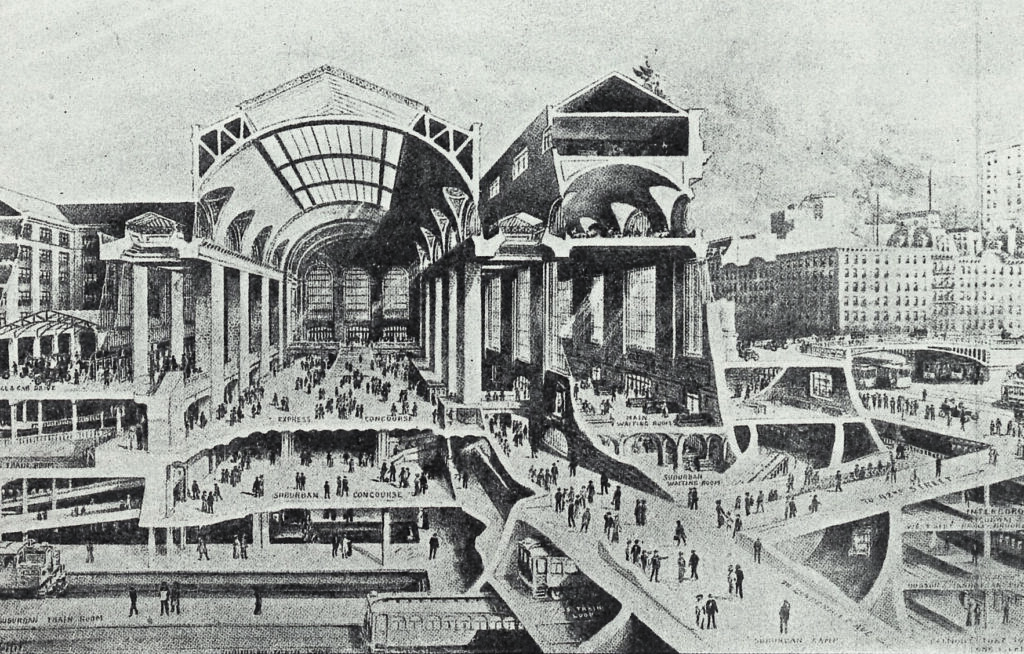Alternative: Architecture of Mobility Should Be Renewed
Re-organising urban mobility services would be an efficient way to combat biodiversity loss and climate change, Olli Hakanen envisages.
In this series architects improve the built environment with uncommissioned ideas.
The most concrete and quickest answer to the climate crisis and biodiversity loss is shifting to a circular economy of land use. This entails that people should stop invading new natural environments as well as focus on a wise use of the land that is already in use and on restoring it to a natural environment. In an urban environment local nature is also an essential source of well-being. A digital presence, as well as new forms of electric and smart mobility, would enable a reorganisation of mobility. The benefits related to time and land use would be enormous. The projected population growth in Helsinki could be located on land that is currently wasted as a traffic area.
I have created solutions for new rail systems in Helsinki for coming up to a decade. This work has crystallised into two visions for renewal, Helsinki Quick Step 2017 and 2023. The latter includes a proposal for locating an airport for electric aviation in Helsinki.
People should stop invading new natural environments as well as focus on a wise use of the land that is already in use.
Helsinki Quick Step 2017
The key idea of the solution is to renew the rail system of Helsinki Metropolitan Area so that it is based on through-running train traffic. Hence, there would be no terminal station in the city centre. I set this objective: the travel chain – in other words, moving from one’s doorstep to the destination – must be faster than travelling by private car. Another principle is to keep the passengers on the ground, in daylight. The third principle is to guarantee the passengers weatherproof, quick and pleasant transfers. The fourth principle is to renew the concept of travel time benefit: it is important to enable making good use of the travel time.

In HQS 2017, a track connecting the eastern and western railway corridors would run through a rock tunnel underneath the district of Käpylä and through a concrete tunnel underneath the railway yard in the district of Ilmala. The new through-station Finnopolis would be located on a current train depot site on the northern side of Hakamäentie. The current main railway station would become the terminal station for fast tram transport. Two platooning tram-trains would operate from the city centre to the through-station: at the station, the platooning tram-train would be divided into three trams, which would continue onto branches running along Hämeenlinnanväylä, as well as to Helsinki and Malmi Airports. The other tram-train would turn back towards the city centre.
In this solution, twice the number of trains per hour could operate to Helsinki, compared to the current capacity. HQS 2017 would also free up a huge land area on the central axis of Helsinki. The former railway and depot area would become a garden city for pedestrians and cyclists. A new park would connect the Central Park (Keskuspuisto) and the Louhenpuisto park in the district of western Käpylä. The highlight of the new park would be a groundwater lake, and its outlet channel, Kumpulanpuro, would form an open channel. Trout would swim upstream from Vanhankaupunginlahti Bay in order to spawn. In the districts of Keski-Pasila and Ilmala, too, large railway areas would become vacant for construction. In the city centre, tram-trains would descend underground, to the level of the metro ticket sales hall. The Kaisaniemi and Töölönlahti parks would become one park. Housing could be constructed in the Töölönlahti platform yard. Railway investments would be covered with gains of land use generated from the housing.
Twice the number of trains per hour could operate to Helsinki, compared to the current capacity.

Resistance by Administration
For the first time, I studied the renewal of the rail system of Helsinki in 2014, commissioned by the Armi Information centre for architecture, building and design. I continued the development of the city model entitled “Entä jos Helsinki?” (“What if Helsinki?”) independently. In 2016, I was heard at the Transport and Communications Committee of Parliament regarding the alternatives for the renewal of the rail system of Helsinki. As a result, the Ministry of Transport and Communications commissioned me to create a solution for through-running train traffic.
Helsinki Regional Transport (HSL) and the Finnish Transport Agency provided a statement of the HQS report. According to their statement, HQS did not follow their long-term work. It was “a too efficient system” for Helsinki. Still, the ministry demanded a comparison of the alternatives for the rail system and required that through-running train traffic be included in the study.
HSL, which was responsible for the comparison, provided a consultant with a commission in which HQS was replaced with a solution that was invented by HSL for the sake of the comparison. It was also the view of the consultant that the comparison did not give a correct picture of the potential of through-running train traffic. However, the consultant said that he had to follow the instructions he had received for the project. Afterwards, I realised that HQS would also have caused changes to the Espoo City Rail Link plan, which was drawn up by the consultant concerned.
The comparison was used in the preparation of the MAL agreement on land use and transport, made between the state and the cities, and in the drawing up of the regional land use plan for Uusimaa. The land use reservations required by HQS 2017 were not made to any land use plans.
Helsinki Quick Step 2023
In 2022, I decided to try to renew the HQS solution in a way that it would not be in conflict with the existing land use plans. The key to the solution was provided by Pasi Hölttä, a railway engineering expert: after the Pasila station, the smallest radius of curvature of a track that turns to the west is only 300 metres. In the HQS 2017 solution, the smallest radius of curvature was 800 metres.
The through-station can now be located along Veturitie on the ground. At this position, it is possible to organise excellent connections to buses, as well as smooth drop-off and pick-up traffic. Long-distance trains from the direction of Tampere and Helsinki city trains will run to the original main railway station. The Helsinki regional train traffic and the long-distance trains from Turku and from the direction of Kouvola will be through-running. At the through-station, it will be possible to transfer to trains, as well as to trams that run to the city centre and to Helsinki Airport. The track bed that leads to the city centre will have space, in addition to trains, for a bicycle route and a tram track that is connected to the inner city’s tram network.
The rail investments will be paid for with the help of gains of land use on the central axis of Helsinki.

For long-distance trains running to the city centre of Helsinki, an additional track starting from the Oulunkylä station will be constructed. Before the Käpylä station, the additional track will descend underneath a deck. At the Käpylä station, it will run underneath through-running train traffic and long-distance trains from Helsinki, and at the through-station, on the same level as the other tracks.
The gains of land use created by the HQS 2023, which, almost entirely, remains on the ground, are smaller than those in the original HQS 2017 solution. On the other hand, the costs are also considerably lower. The investments will be paid for with the help of gains of land use on the central axis of Helsinki. It will not be necessary to carry out mega investments, such as the City Rail Loop (Pisararata) and Lentorata.

Helsinki City Airport for Electric Aviation
The HQS 2023 vision also includes the construction of a hub for an electric aviation network in Helsinki. The angles of approach and climb of electric aircraft are more agile than those of aeroplanes that use internal combustion engines. The sound of an electric motor does not have frequencies that are unpleasant for human ears, and the volume is clearly lower than in an internal combustion engine. Airports for electric aviation can be located in an urban environment. The length of the runway does not need to be longer than 800 metres.
In Helsinki, the Tattarisuo area, which has a large number of operating premises, would be an optimal location for an airport. Its accessibility is excellent, and the connection to the city centre of Helsinki is quick. The contaminated soil in the area must be cleaned anyway, which is why the current building stock is being removed. In addition to the airport, Tattarisuo would also have space for housing and operating premises. Electric aviation would serve, with planes for fewer than 20 passengers, connections from the other parts of Finland to Helsinki, as well as connections from Helsinki to the corresponding city airports in Europe. There are approximately 80 aerodromes in Finland that can, with moderate costs, be renewed into airports for electric aviation.
Aircraft developers promise that the length of a flight with one charge can be 800 kilometres and the speed as high as 500 km/h. For instance, a trip from Kuhmo in Kainuu Region to Helsinki would take two hours, instead of an entire day. Electric aviation represents the circular economy of land use in an outstanding way. It is only the airports that require space on the ground.

A Swift Change Is Possible
Today, the most important task of architects is “to design non-construction” to avoid unnecessary construction in other words. How could we shift from traffic planning that despises nature to the development of an overall service for mobility that promotes a wise use of land? A curious attitude and an open study of alternatives are only the first steps. The concepts and criteria that guide planning and decision-making must be renewed. We have to get rid of the moral deficit in the planning of infrastructure. I am convinced that rapid change is possible. The view ahead of us is inspiring: a symbiosis between people and nature. Let’s head there! ↙
OLLI HAKANEN
Architect. Founded Respace Company in 1995. During 2000–2010 worked on strategic workspace consultancy. www.helsinkiquickstep.fi




